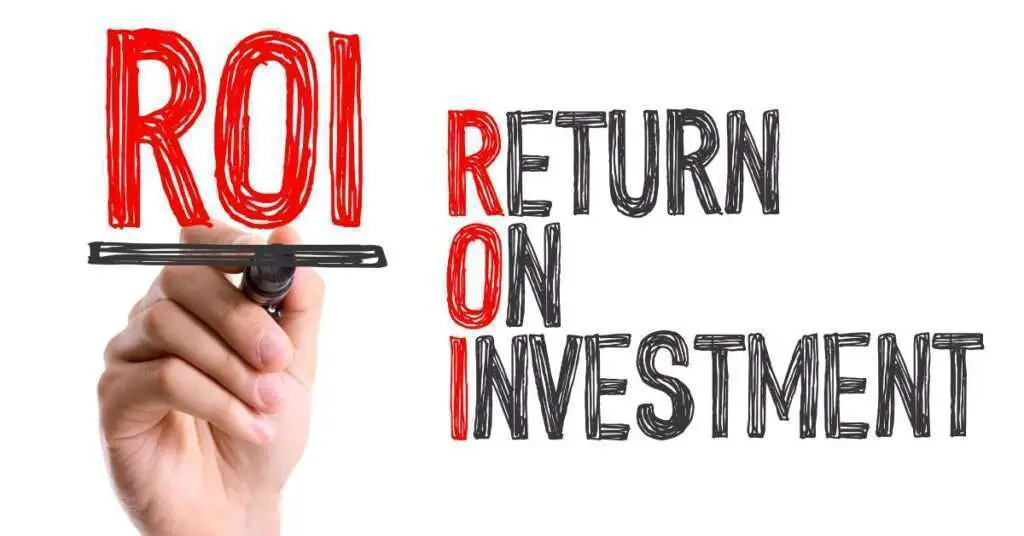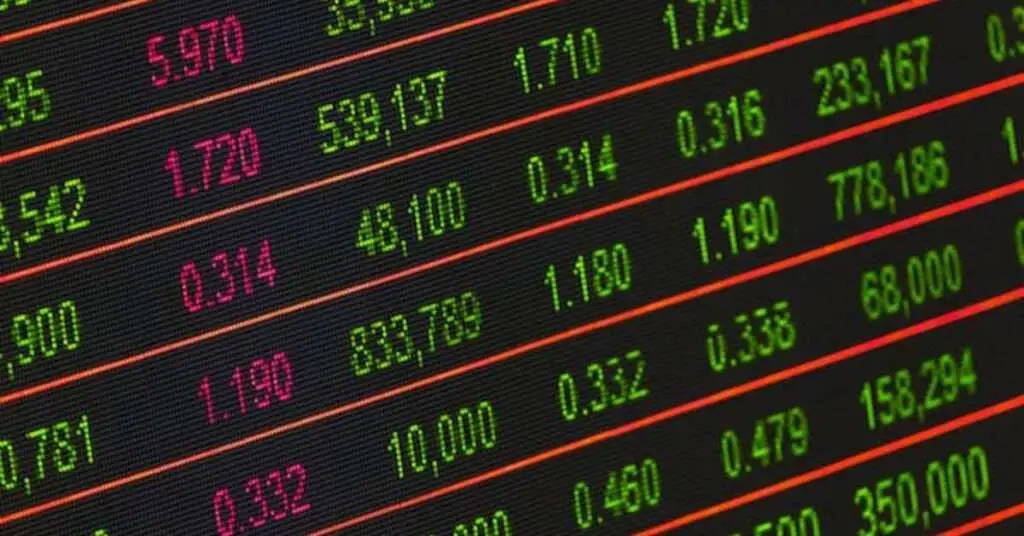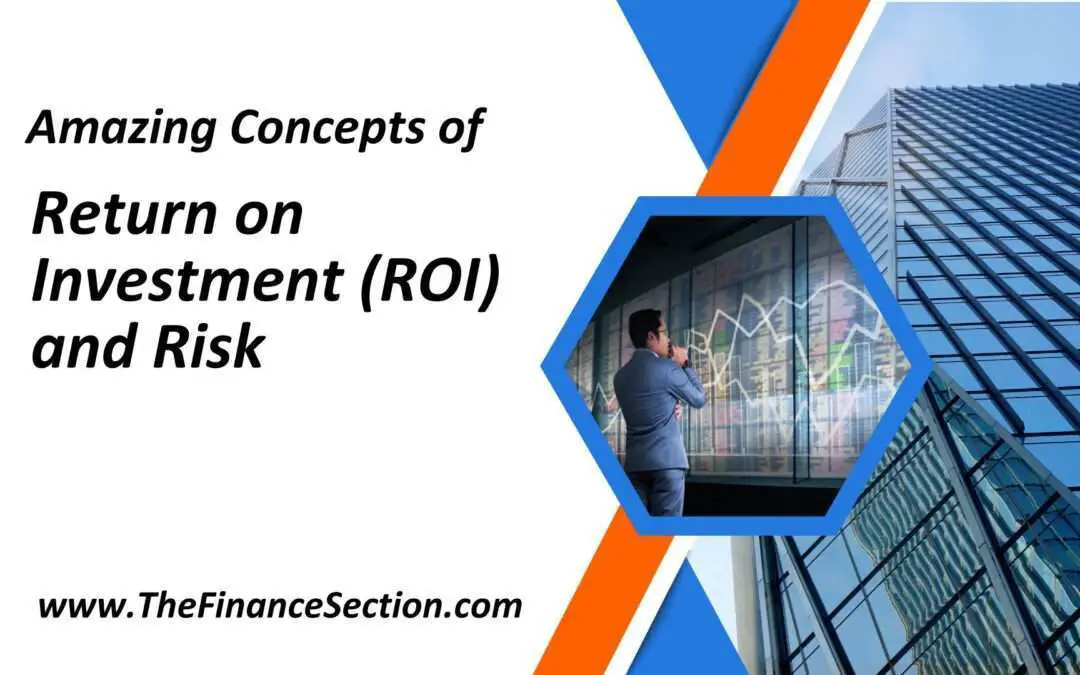Return on Investment (ROI) and risk are fundamental financial concepts that greatly impact investment decision-making. ROI measures the profitability of an investment, while risk evaluates the uncertainty and potential for loss associated with that investment.
Understanding these concepts is crucial for individuals and organizations aiming to maximize financial returns while effectively managing risk.

ROI measures the profitability of an investment by comparing the gain or profit generated to the initial investment. It provides insights into the performance and effectiveness of an investment, allowing investors to assess its potential returns.
On the other hand, risk assesses the uncertainty and potential for loss associated with an investment. It considers factors such as market fluctuations, economic resources, and industry trends that can impact investment outcomes.

While ROI offers potential rewards, it’s important to consider the associated risk. For instance, what if company XYZ faced financial challenges or industry disruptions? Your investment could have experienced losses or lower returns. This emphasizes the need to assess and manage risk effectively.
By understanding ROI and risk, individuals and organizations can make informed investment decisions, balancing potential returns with risk tolerance. Incorporating real-life examples and considering hypothetical scenarios helps illustrate the concepts and their impact on financial outcomes.
So, the question is that what are the risk factors in business high risk high reward investments?
Comprehending the concepts of ROI and risk is vital for individuals and organizations seeking to make sound investment decisions. It empowers them to evaluate profitability, consider potential risks, and strike a balance that aligns with their financial goals and risk appetite.
By applying these concepts and strategies, investors can work towards maximizing their returns while effectively managing risk in the dynamic world of finance.
1. Understanding Return on Investment
Return on Investment (ROI) is a financial metric measuring an investment’s profitability and cost. It provides insights into the percentage increase or decrease in the value of an investment over a specific period. Calculating ROI involves dividing the net profit or gain from the investment by the initial investment cost and expressing it as a percentage.

To grasp the concepts of ROI and risk, let’s imagine you invested $2,000 in a hypothetical company, XYZ, in the year 2010. How much would you have earned if the investment grew at an average annual rate of 10% over the next five years? By applying the compound interest formula, your investment would have grown to approximately $3,221, resulting in a $1,221 return.

ROI provides a clear measure of the profitability of an investment, allowing investors to assess the success of their ventures. By analyzing ROI, individuals and organizations can compare the returns from different investments and make informed decisions about where to allocate their resources.
It’s important to note that ROI is just one factor to consider when evaluating an investment. Other factors, such as risk, liquidity, and market conditions, also play a crucial role in investment decision-making. By considering these factors in conjunction with ROI, investors can understand the potential rewards and risks associated with their investment choices.
Understanding return on investment is essential for individuals and organizations seeking to assess the profitability of their investments. Investors can make informed decisions and optimize their financial outcomes by calculating ROI and considering other relevant factors.
2. Evaluating Risk
Risk is like a roller coaster ride in the financial world. Just like how you strap yourself in for twists and turns, investors buckle up to navigate the uncertainty and potential for loss associated with their investments.
It’s like trying to predict the weather or guessing the next dance move at a party – sometimes you win big and other times, you might end up doing the chicken dance when you expected the tango!

But fear not! There are tools and techniques to help assess and manage risk. It’s like having a superhero sidekick by your side. You can analyze historical data to see how investments have performed in the past, just like investigating your friend’s party track record. Did they throw epic bashes or host snooze-fests?
You can also dive into fundamental and technical analysis, studying the financial health of companies and market trends. It’s like being a detective, searching for clues to crack the case of profitable investments.
You can also dive into fundamental and technical analysis, studying the financial health of companies and market trends. It’s like being a detective, searching for clues to crack the case of profitable investments.

However, the risk doesn’t exist in a vacuum. It’s influenced by various factors, like how the music, the crowd, and the overall vibe influence your dance moves.
Market volatility is like a wild DJ, spinning records that can make your investments soar or crash. Economic conditions act as the dance floor, sometimes smooth and groovy and other times shaky and unpredictable.
Industry trends set the rhythm, determining whether your investments can ride the wave of success or get left behind. And company-specific factors are like the dancers themselves, with each company having its own strengths, weaknesses, and surprises.
Remember the financial crisis of 2008?
It was like a sudden rainstorm that drenched the markets and left many investors soaked. Lehman Brothers, a prominent investment bank, filed for bankruptcy, causing widespread panic and market turmoil. It was a stark reminder of how unforeseen events and systemic risks can shake the very foundations of the financial world.
On the other hand, think about the rise of electric vehicle companies like Tesla. Investing in them was like getting on the dance floor early, catching the beat of a new trend. Those who took the risk and believed in the future of clean energy were rewarded with significant returns as the electric vehicle revolution gained momentum.

So, the risk is like a thrilling dance. It’s a balancing act of managing uncertainty, making informed decisions, and staying nimble on your feet.
By understanding the factors contributing to risk, and utilizing risk assessment tools, you can confidently navigate the dance floor of investments and maybe even bust out some impressive moves along the way!
3. Balancing Return on Investment and Risk
Balancing return on investment and risk is like walking on a tightrope while juggling flaming torches. On one hand, you want those jaw-dropping returns that make your bank account go ka-Ching! But on the other hand, you don’t want to get burned and end up with a pile of ashes instead.

Imagine you’re at a buffet with a wide array of delicious dishes. Each dish represents a different investment opportunity. Now, you could pile your plate high with just one type of food: spicy jalapeño poppers.
You’ll be on cloud nine if you love them and they pay off. But what if they turn out to be too hot to handle, leaving you with heartburn and regret? That’s the risk of going all-in on one investment.
Instead, let’s try a different approach. If you decide to mix things up, grab a bit of everything on offer. You take some savory stocks, a dollop of real estate, a slice of bonds, and a sprinkle of cryptocurrencies.
Just like that, you’ve created a diversi-delicious investment platter! If one investment goes belly-up, you still have other flavors to savor. It’s like having a financial insurance policy against jalapeño-induced disasters.

But wait, there’s more! Asset allocation is like choosing your dance partners wisely. You wouldn’t want to do the tango with someone with two left feet, right?
In the investment world, it’s about spreading your money across different asset classes, industries, and geographical regions. If the stock market decides to do the Macarena while the real estate market is doing the Cha-Cha, you’ll still have some smooth moves and potentially higher returns.
Risk management techniques are your secret weapon against unexpected surprises.
Embrace the power of “what if” scenarios, stay informed about current trends, and remember that higher returns often come with spicier risks. With this approach, you’ll be twirling on the dance floor of investments, maximizing your returns, and keeping those risks in check. Now, let’s get that investment buffet started!
Final Thoughts
The concepts of return on investment and risk form the foundation of informed investment decision-making. While return on investment measures profitability, risk evaluates potential losses. Balancing these factors is essential for optimizing investment outcomes.
By thoroughly assessing risk, implementing suitable strategies, and drawing insights from real-life examples, investors can confidently navigate the dynamic world of investments.
So, remember to crunch the numbers, weigh the risks, and seek opportunities that align with your financial goals. With this approach, you’ll be on the path to making informed investment decisions and maximizing your chances of financial success.

